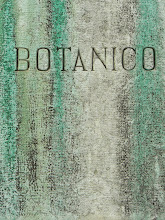 WOOD DWELLERS
WOOD DWELLERSTwenty-nine Japanese families have found their version of happiness by creating their own idyll in a Tokyo suburb. Together with eco-architect Akinori Sagane they have built Kinoka no Ie, a community development in Machida-shi in the south of the city. It’s a 21st-century alternative to the hippy commune: eco-logically sound, but without the home knits and tie-dye. Sagane found the land, advertised for buyers and then organized the group’s purchase of the plot. Residents own their apartments – which range from 45 to 80 sq m – and each has a share in the rooftop vegetable gardens.
Non-toxic materials were used wherever possible and chemicals avoided at all costs. Even the concrete was mixed with filtered water. Over the course of two years of planning, discussion and seminars on everything from sustainability to eco-DIY, residents contributed their voices to the design. (…)
Decisions that affect all the residents are made together, and everyone takes it in turns to tend to the public areas. "The best part about living here is the sense of community,” says Nakabayashi, whose top-floor apartment has a balcony overlooking the gardens. “We all got to know each other during the time the development was being planned.” Now they exchange vegetables, look after each other’s children and share cars and bicycles. They all pitched in on waterproofing the exterior: instead of coating the timbers with chemicals, they used an old Japanese technique to scorch the wood and seal it.
Kinoka no Ie (literally “Wood-flavoured House” looks bucolic – the gardens are bursting with vegetables and flowers, children play together and doors are unlocked. But behind it is the challenge of building pratical urban homes while sticking to ecological principles.
“It is not easy to make a community like this in the city,” says Sagane. “But we’ve shown it’s possible. One of the residents is 100% self-sufficient in rice and vegetables, while the rate of self-sufficiency in Tokyo is less than 3%.”
Sagane, whose studio Ambiex is based in Tokyo, has spent two decades trying to persuade people to live in a more environment conscious way. “People have a hard time accepting that a little mould is better than a house full of chemicals,” he says. “Japanese are meticulous and don’t like the slight changes tha happen with woods. Japanese houses usually only last for 30 years and then they just become toxic waste.”
The hard slog is paying off. Sagane has built three eco-projects in the past 10 years and one more are at the planning stage. (…) Sagane’s work has been focused on city projects, but he’s now turning his attention to rural Japan. “There’s this illusion that only people who live in the countryside lead eco-friendly lives,” he says. “But the reality is they usually drive, use agri-chemicals and live in houses full of chemical substances. I think the city and the countryside can influence each other.” Sagane plans to take his work nationally from 2009 and he’s in talks with a prefab construction company about producing an eco-house. “I’m aiming to build houses that last 300 years,” he says. “They don’t need to have major repairs and the running costs are cheap. That should make people happy.”
In MONOCLE, Dezembro 08/Janeiro 09



Sem comentários:
Enviar um comentário